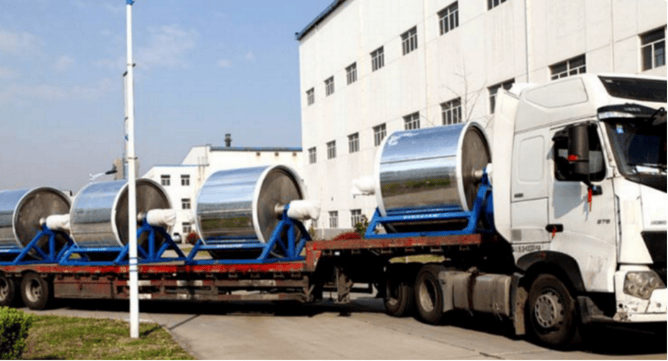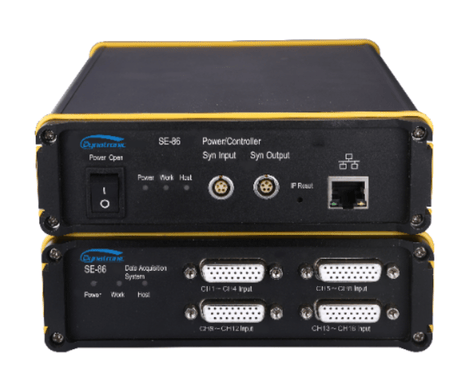Aero-Engine Fuel Tank Static Load Testing
Project name: Aero-Engine Fuel Tank Static Load Testing
A leading aerospace propulsion manufacturer utilizes the Dynatronic 240-channel SE-86H High-Speed Static Stress-Strain Testing and Analysis System to conduct static load monitoring during fuel tank pressurization tests.
1. Test Objectives
Structural Integrity Verification – Validates fuel tank deformation limits under extreme pressure conditions.
Stress Distribution Mapping – Identifies localized stress concentrations (welds/curvatures) through multi-point strain measurement.
Leakage Risk Assessment – Correlates strain data with pressure thresholds to predict potential failure points.
2. SE-86H System Capabilities
Ultra-High Channel Capacity – 240 synchronized channels for full-field strain gauge coverage (foil/FBG sensors).
Precision Static Measurement – Resolves micro-strain (με) levels at 0.1% accuracy under quasi-static loading.
Real-Time Visualization – Displays strain cloud maps and pressure-strain curves during ramp loading.
3. Testing Protocol
Instrumentation Phase
Strain rosettes installed on tank welds, domes, and mounting interfaces.
Pressure transducers integrated with SE-86H for load-strain synchronization.
Pressurization Test
Stepwise pressure increase (0→150% design limit) with strain recorded at 10Hz sampling.
Hold cycles at critical pressures to monitor creep effects.
Post-Test Analysis
Finite Element Model (FEM) correlation using strain contour plots.
Burst pressure prediction via strain-rate extrapolation.
4. Technical Innovations
Temperature-Compensated Strain Analysis – Automatic thermal drift correction for cryogenic/ambient tests.
Overload Protection – Hardware interlocks pause testing upon detecting abnormal strain gradients.
AS9100-Compliant Reporting – Generates certification-ready test documentation.
5. Industry Applications
Composite Tank Validation – Delamination detection in CFRP tanks through asymmetric strain patterns.
Reusable Vehicle Certification – Accumulated strain analysis for lifespan estimation.
6. Next-Gen Upgrades
AI-Based Anomaly Detection – Machine learning algorithms flag micro-yielding events in real time.
Digital Twin Integration – Live test data feeds into computational models for predictive maintenance.
Conclusion
The Dynatronic SE-86H system provides a robust, high-precision platform for static load testing of aero-engine fuel tanks. By capturing detailed multi-point strain data and correlating it with pressure conditions, engineers can assess structural integrity, identify stress concentrations, and predict potential failure points. Its advanced visualization, thermal compensation, and digital integration capabilities enable safer designs, optimized materials, and reliable certification for next-generation aerospace propulsion systems.


